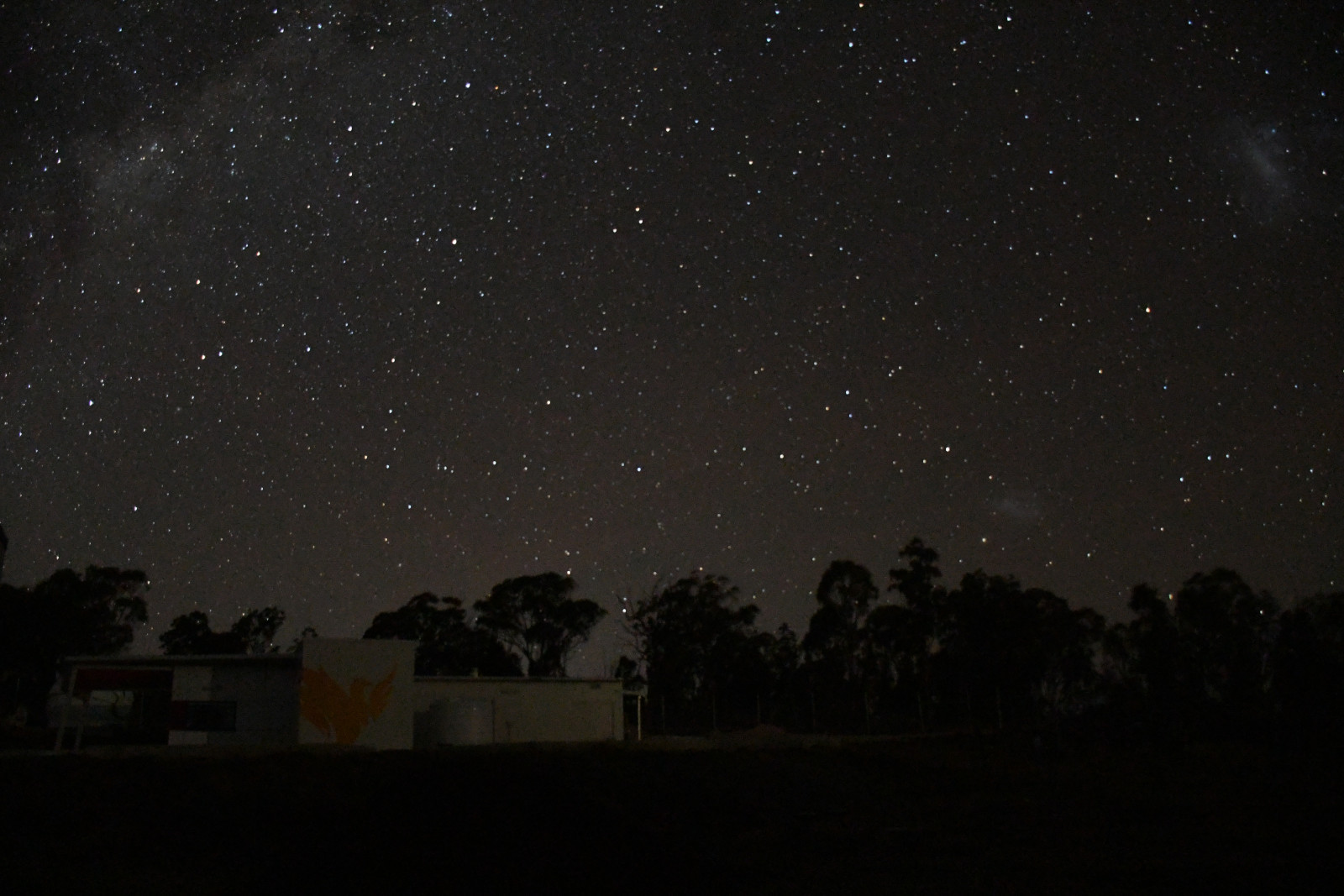

The MINERVA-Australis spectroscopic telescope array and other facilities at Mount Kent Observatory provide students with state-of-the-art instruments and the opportunity to be a part of the international quest to understand nearby planetary systems.
MINERVA-Australis is supported by Australian Research Council LIEF Grant LE160100001, Discovery Grant DP180100972, the Mount Cuba Astronomical Foundation, NASA, and institutional partners:
MINERVA-Australis is an autonomous instrument that utilizes several coordinated telescopes feeding light from target stars and planetary systems through optical fiber to an echelle spectrograph. Precision measurements of the wavlength of light in the stellar spectra yield the velocity of the stars with respect to the observatory to a precision of 1 meter per second. Since the stars reflect the motions of the planets orbiting them, observations with MINERVA-Australis may be used to determine the masses of the planets near these stars. Combined with other measurements of transit events, the data tell us about the planet's density and possible habitability.
Currently the telescope array has four Planewave CDK700 0.7-meter corrected Dall Kirkham alt-azimuth telescopes for spectroscopy and a CDK125 "L-mount" telescope for bright star photometry. Additional telescopes are also on the site for coordinated photometry as part of the Shared Skies collaboration. The collecting area of the spectroscopic telescopes is equivalent to a 1-meter telescope. The modular construction of the facility provides a path to expanded capabilities with the addition of larger telescopes in the 2-meter class and other spectrographs for small planet measurements with velocity precision in the centimeter/second regime.
A stabilised echelle spectrograph with a backlighted iodine wavelength reference cell, designed by KiwiStar Optics, provides meter per second radial velocities of stars brighter than magnitude 9 typical of those found in the on-going TESS survey. The spectrograph has a resolution of 75,000, meaning that 3 pixels of its spectral data cover 1/75,000th of a wavelength of light. Velocities are determined from hundreds of spectral features that combined provide sub-pixel precision.
